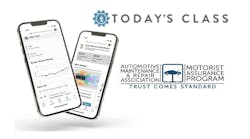Rough rides on roads with poor-condition pavement in many urban areas is forcing drivers to pay significantly more in vehicle repairs, depreciation, fuel use and tire wear, said a new report from the TRIP national research group.
TRIP said drivers in Oklahoma City, where 53 percent of roads were rated in poor condition, have the nation's highest annual vehicle operating costs at $1,025.
But the condition of its roads is better than in some other areas. TRIP said Detroit had 56 percent of road surfaces rated poor, while the San Francisco-Oakland area had the worst large urban area reading of 71 percent of roads in poor condition.
"From coast to coast, major streets and freeways in most U.S. communities are showing significant signs of distress," TRIP said in the report. "The result of this increasing stress, coupled with other factors, is that nearly one-third of urban streets and highways have rough pavements that provide a ride that many drivers find unacceptable.
"And one result of driving on these rough roads and highways is that the cost to own and maintain a vehicle increases because cars and trucks wear out more quickly, require more maintenance and consume more fuel."
The report indicated that vehicle travel trends could make the pavement problems worse. "Increases in vehicle travel since 2000 have resulted in a significant increase in wear and tear on the nation's roads," TRIP said. "Vehicle travel growth, which slowed significantly as a result of the nation's significant economic downturn in 2008 and subsequent slow economic recovery, have since returned to pre-recession growth rates."
In addition, it said the greatest increase in vehicle travel is from the heaviest vehicles. "Travel by large commercial trucks, which places significant stress on paved road and highway surfaces, continues to increase at a rate approximately double the rate for all vehicles and is anticipated to continue to grow at a significant rate through 2030."
The report said state departments of transportation and local agencies are increasingly deploying improved pavement materials and using effective construction and repair practices to increase the long-term drivability of pavements.
It said keeping up with growing demand means adequately investing in roads and maintenance at all levels of government. It cited Federal Highway Administration estimates that each dollar spent on road and bridge improvements generates an average benefit of $5.20 through reduced vehicle operating costs, improved safety, lower maintenance expenses and traffic flow improvements.


